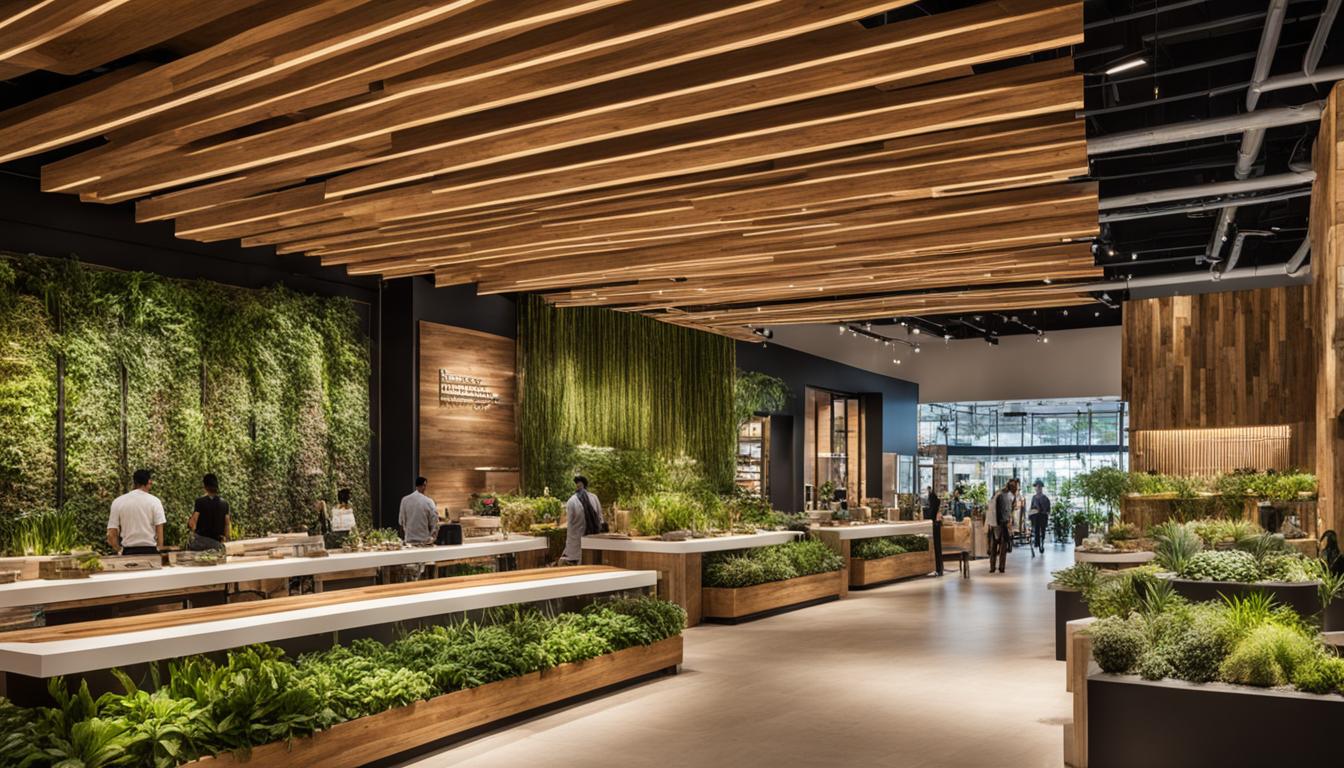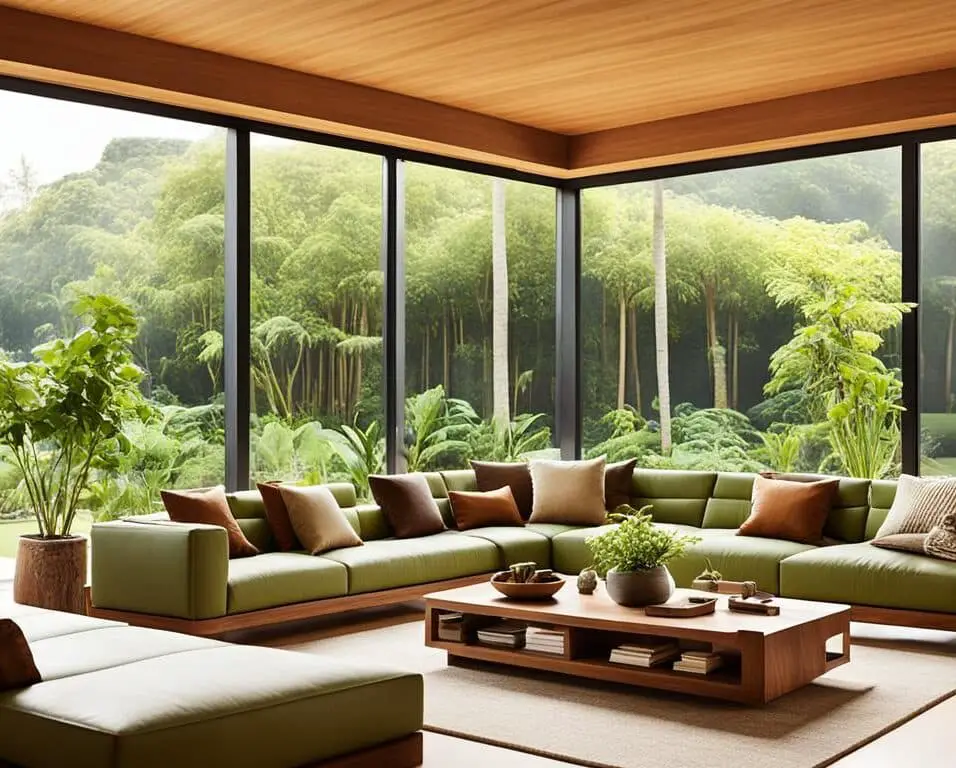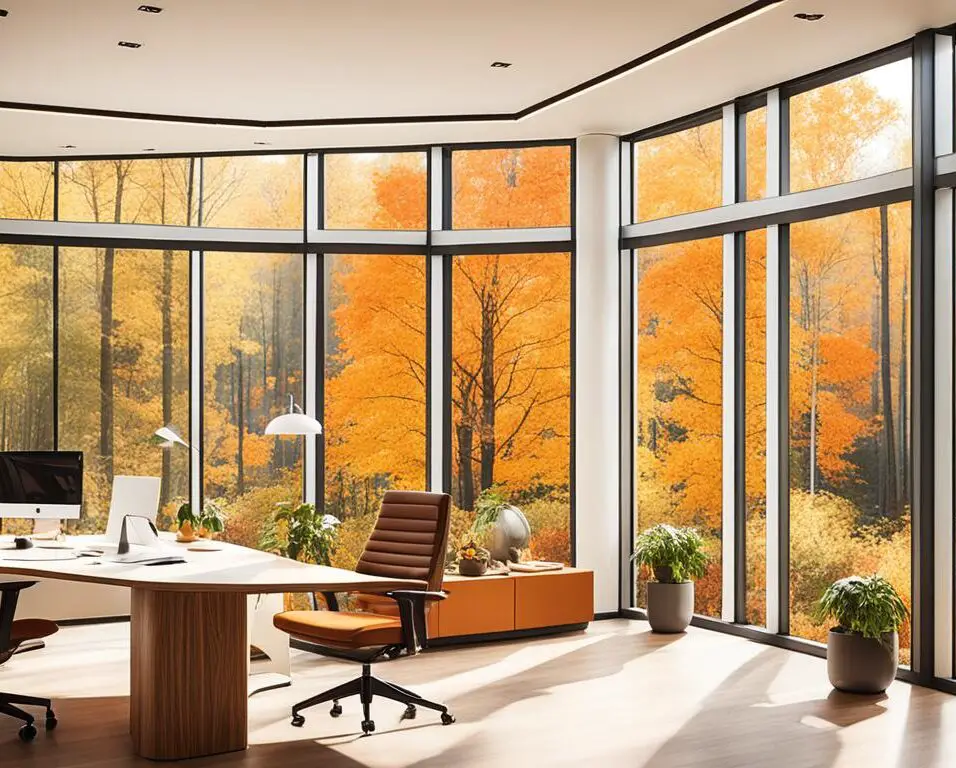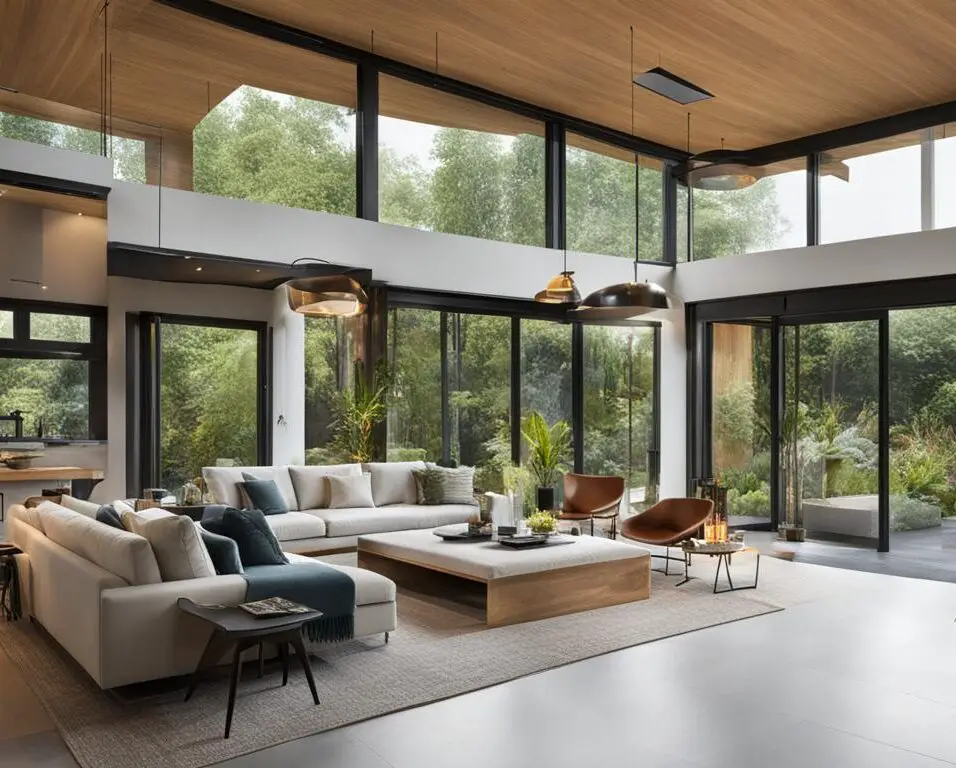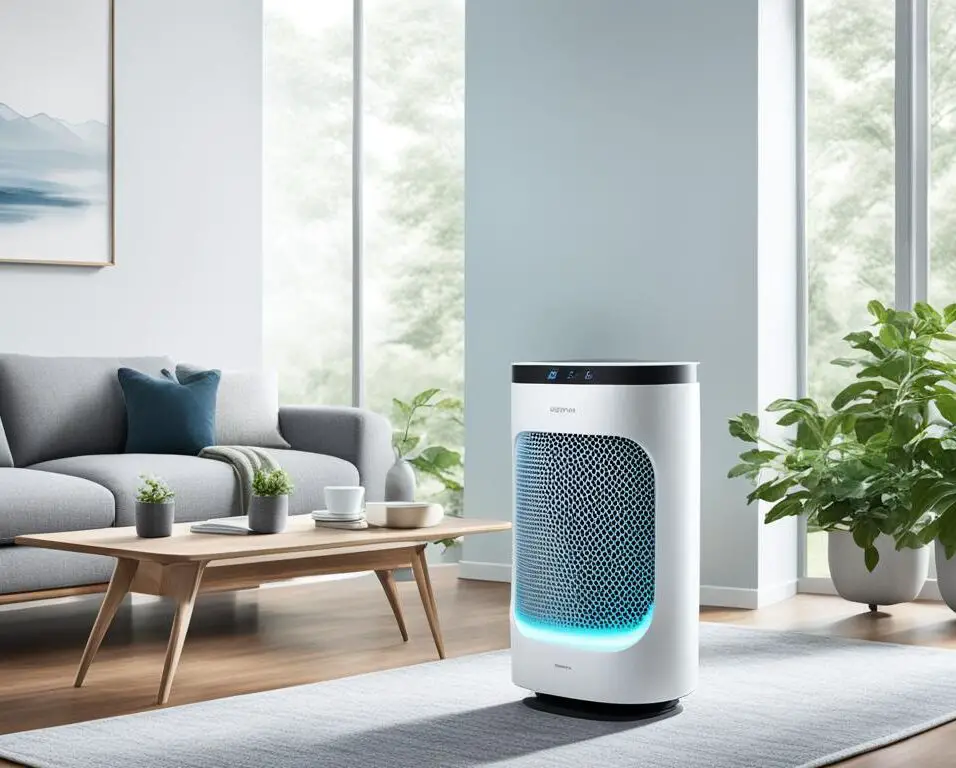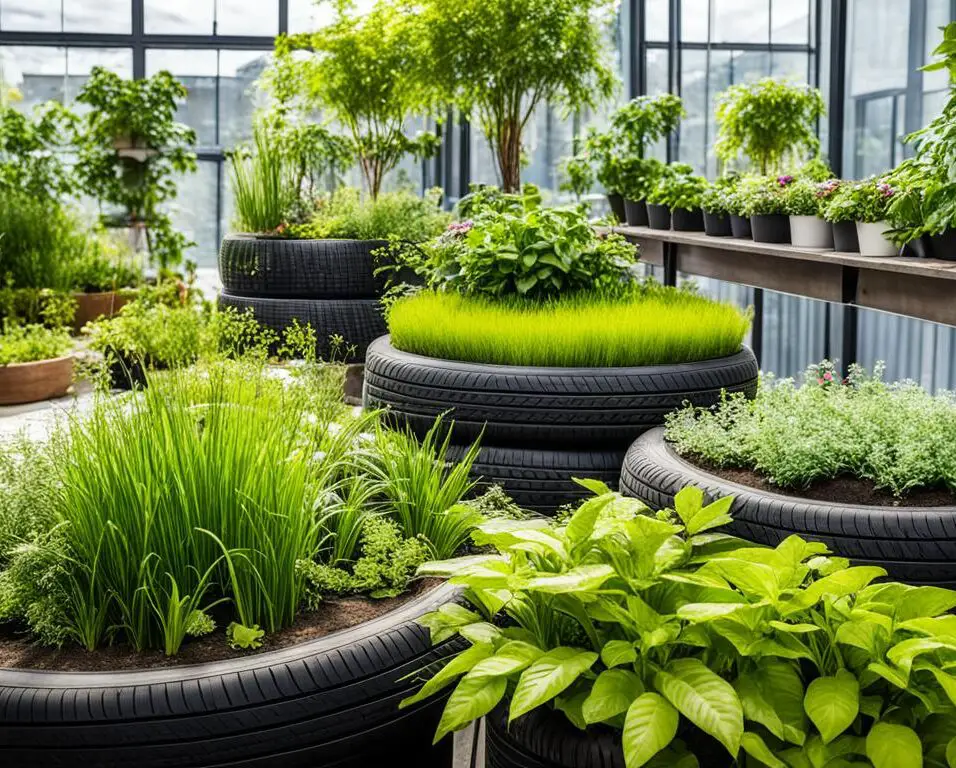Retail Reimagined: Biophilic Design in Commercial Spaces
Welcome to the world of retail reimagined, where the harmony between nature and commerce is brought to life through the principles of biophilic design. In commercial spaces, biophilic design integrates natural elements and features, creating a seamless connection between consumers and the environment. This innovative approach not only enhances the shopping experience but also promotes well-being and tranquility. As a professional journalist exploring the intersection of design and retail, I am thrilled to introduce you to the captivating realm of biophilic design in commercial spaces.
Key Takeaways:
- Biophilic design incorporates natural elements into commercial spaces, enriching the shopping experience.
- This design approach improves well-being, productivity, and creates a sense of calm and relaxation.
- Benefits of biophilic design in commercial retail spaces include reduced stress levels, increased customer satisfaction, and enhanced employee productivity.
- Implementing biophilic design requires incorporating natural elements and materials throughout the retail space.
- Current trends in biophilic design include vertical gardens, green roofs, technology integration, and eco-friendly materials.
Benefits of Biophilic Design in Commercial Retail Spaces
Biophilic design offers a range of benefits for commercial retail spaces. It has been proven to reduce stress levels and improve overall well-being, leading to increased customer satisfaction and loyalty. Incorporating biophilic elements into retail environments creates a soothing and inviting atmosphere that resonates with shoppers, enhancing their overall shopping experience.
One of the key benefits of biophilic design in commercial retail spaces is its ability to reduce stress and promote relaxation. Natural lighting, for example, has a profound impact on our well-being. Studies have shown that exposure to natural light can help regulate our circadian rhythms and improve mood. By incorporating large windows, skylights, or light wells into the design, retailers can harness the power of natural light, creating a more calming and comfortable shopping environment.
Living walls and indoor plants are also effective biophilic design elements that can enhance the ambiance of a commercial retail space. Not only do they add a touch of nature to the environment, but they also help purify the air, creating a healthier atmosphere for shoppers. The presence of plants has been linked to improved air quality and increased humidity, which can have a positive impact on overall well-being.
Furthermore, biophilic design has been shown to have a positive effect on employee productivity and creativity. When employees are surrounded by nature-inspired elements, such as greenery and natural textures, they tend to feel more energized and motivated. This, in turn, translates to improved customer service and a more positive shopping experience for customers.
“Incorporating biophilic design into commercial retail spaces can help create an environment that promotes well-being and enhances the overall shopping experience.” – First source
By embracing biophilic design principles, retailers can differentiate themselves from competitors and attract a larger customer base. A retail space that incorporates elements of nature creates a unique and memorable experience for shoppers, setting the business apart from traditional, sterile environments.
The Benefits of Biophilic Design in Commercial Retail Spaces:
- Reduces stress levels
- Improves overall well-being
- Increases customer satisfaction
- Promotes relaxation
- Enhances employee productivity and creativity
- Creates a unique and memorable shopping experience
Overall, biophilic design has the potential to transform commercial retail spaces into thriving and harmonious environments that benefit both customers and employees.
Implementing Biophilic Design in Commercial Retail Spaces
Implementing biophilic design in commercial retail spaces requires careful planning and consideration. It involves incorporating natural elements, such as plants, water features, and natural materials, into the design and layout of the space. By seamlessly blending nature with the built environment, biophilic design creates an atmosphere that is both visually appealing and soothing for shoppers.
Biophilic design principles can be applied to various areas of a retail space, enhancing the overall shopping experience. Here are some key areas where biophilic design can be implemented:
- Entrances: Create a welcoming atmosphere at the entrance of the store by incorporating elements such as green walls, potted plants, or natural lighting.
- Product displays: Showcase products in a more natural and organic way by integrating natural textures, colors, and materials. Consider using materials like wood or stone for display fixtures.
- Seating areas: Design comfortable seating areas that feature natural elements, such as outdoor-inspired furniture or seating arrangements surrounded by lush greenery.
- Restrooms: Transform restrooms into tranquil oases by incorporating living walls, natural lighting, or the use of sustainably sourced materials for fixtures and finishes.
Implementing biophilic design not only creates a visually appealing space but also offers numerous benefits for both shoppers and retailers. It improves air quality, reduces stress levels, and increases a sense of well-being, leading to a more enjoyable and memorable shopping experience.
“Biophilic design has the potential to transform commercial retail spaces into vibrant and inviting environments. The incorporation of natural elements helps create a sense of connection with the surrounding environment, making shoppers feel more at ease and engaged. It’s a win-win situation for both retailers and customers.” – Jane Mitchell, Interior Design Expert
Successful implementations of biophilic design in commercial retail spaces can be seen across various industries, from boutique clothing stores to large shopping centers. By embracing biophilic design principles, retailers can differentiate themselves from competitors and provide shoppers with a unique and immersive experience.
For more insights and case studies on successful implementations of biophilic design in commercial retail spaces, refer to the Third source, where you can find valuable information and inspiration for integrating nature into your retail environment.
Biophilic Design Trends in Commercial Retail Spaces
In the ever-evolving world of commercial retail spaces, biophilic design trends are making significant waves. Retailers are recognizing the importance of incorporating natural elements into their store designs to create visually stunning and environmentally conscious spaces. These trends are not only aesthetically pleasing but also have a positive impact on the well-being and shopping experience of customers.
The Rise of Vertical Gardens and Green Roofs
One of the standout trends in biophilic design is the integration of vertical gardens and green roofs in commercial retail spaces. These natural installations bring vibrant greenery into the shopping environment, creating a sense of tranquility and connection with nature. Vertical gardens, also known as living walls, can be strategically placed to enhance product displays, seating areas, or provide a captivating backdrop for shoppers.
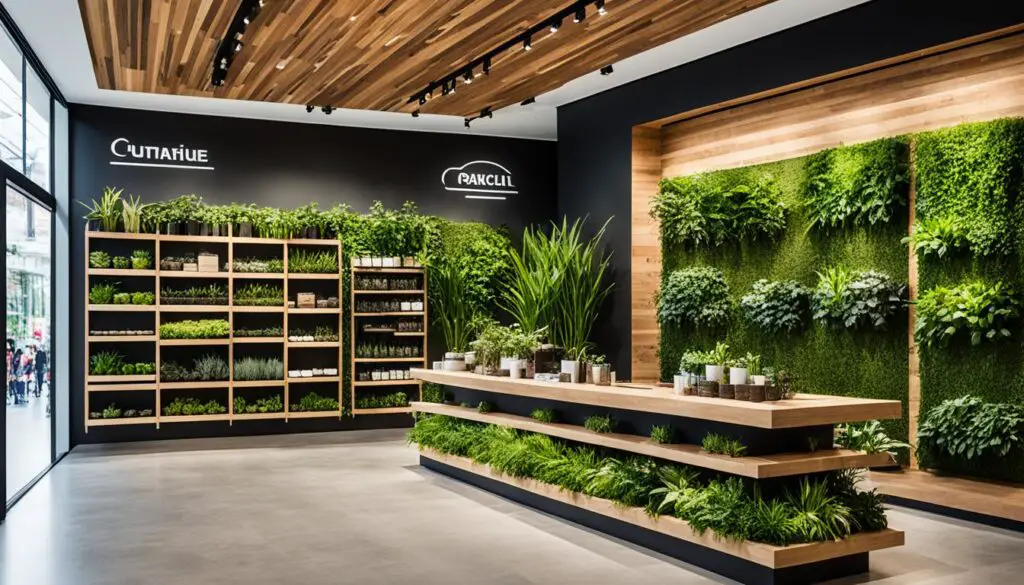
Embracing Natural Light
Natural light is a powerful and sought-after element in any space, and it’s no different in commercial retail settings. Retailers are increasingly incorporating large windows, skylights, and open floor plans to maximize the amount of natural light that permeates the store. This not only reduces the need for artificial lighting but also creates a bright and welcoming atmosphere for shoppers.
The Sustainable Approach: Eco-Friendly Materials
In line with the growing global consciousness towards sustainability, commercial retail spaces are adopting the use of eco-friendly materials in their biophilic designs. From reclaimed wood and recycled materials to low-emission paints and energy-efficient fixtures, retailers are prioritizing the integration of sustainable elements. This not only aligns with eco-conscious consumers but also showcases their commitment to environmental responsibility.
The Fusion of Technology and Nature
As technology continues to advance, an emerging trend in biophilic design is the integration of technology with the natural world. Retailers are exploring the possibilities of interactive digital displays that showcase virtual reality experiences or stunning natural landscapes. This fusion of technology and nature creates a unique and immersive shopping experience that captivates and engages customers.
These biophilic design trends can be observed in a wide range of retail environments, from small boutiques to large shopping malls. The integration of natural elements, sustainable materials, and technology not only enhances the aesthetic appeal of commercial retail spaces but also fosters a sense of well-being and connection with nature for both customers and employees.
Conclusion
Biophilic design has revolutionized the way commercial retail spaces are designed and experienced. By incorporating natural elements and features, retailers can create environments that are not only visually appealing but also promote well-being and connection with nature.
The implementation of biophilic design in commercial retail spaces has been shown to enhance the shopping experience, increase customer satisfaction, and improve employee productivity. The use of biophilic elements like natural lighting, living walls, and indoor plants creates a calming and inviting atmosphere, fostering a positive emotional connection with consumers.
As the demand for sustainable and eco-friendly design continues to grow, biophilic design is expected to play a significant role in the future of commercial retail spaces. Retailers are increasingly incorporating vertical gardens, green roofs, and sustainable materials into their store designs, aligning with consumers’ growing desire for environmentally conscious choices.
Overall, biophilic design offers a promising avenue for retailers to create engaging and unique shopping experiences while cultivating a meaningful connection with nature. By embracing biophilic design principles, commercial retail spaces can thrive in an ever-evolving retail landscape, meeting the demands of conscious consumers and contributing to a more sustainable future.
FAQ
What is biophilic design?
Biophilic design incorporates natural elements and features into built environments, creating a connection between consumers and nature.
How does biophilic design benefit commercial retail spaces?
Biophilic design has been shown to reduce stress levels, improve overall well-being, increase customer satisfaction, and enhance employee productivity and creativity in retail environments.
What are some examples of biophilic design elements in commercial retail spaces?
Examples of biophilic design elements include natural lighting, living walls, indoor plants, water features, and the use of natural materials.
How can biophilic design be implemented in commercial retail spaces?
Implementing biophilic design involves incorporating natural elements into the design and layout of the space, such as adding plants, creating seating areas, and incorporating natural materials.
What are the latest trends in biophilic design for commercial retail spaces?
Some of the latest trends in biophilic design include integrating vertical gardens, green roofs, natural light, sustainable and eco-friendly materials, and the integration of technology and nature.



